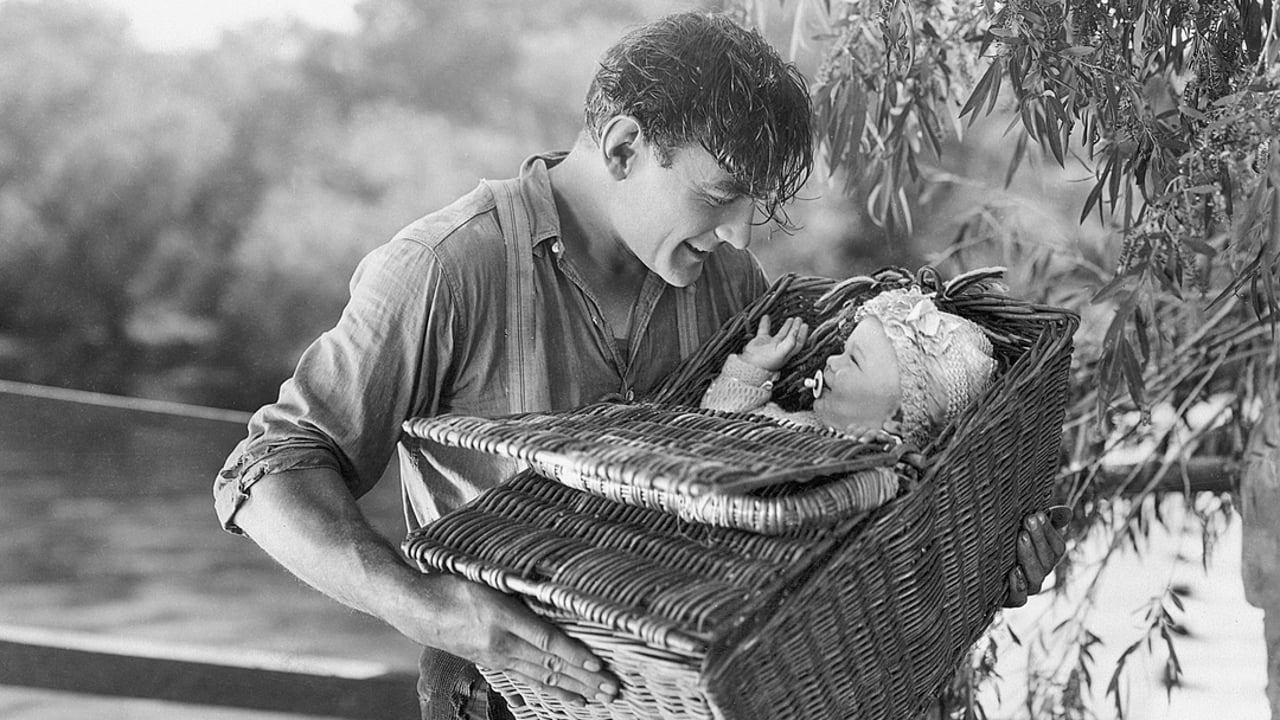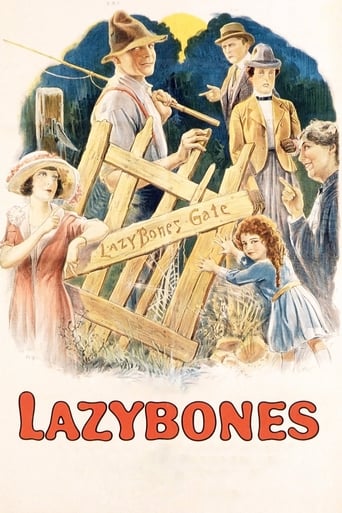



everything you have heard about this movie is true.
View MoreA lot of fun.
The joyful confection is coated in a sparkly gloss, bright enough to gleam from the darkest, most cynical corners.
View MoreIt really made me laugh, but for some moments I was tearing up because I could relate so much.
View MoreThe title character, Lazybones (Buck Jones), was named this because he's a ridiculous caricature when it comes to his sleeping all the time and being incredibly lazy. I didn't like this concept, as it just seemed very unreal. However, I did love his character later in the film when he showed he was more than just a one-dimensional guy. While fishing, he sees a woman trying to drown herself in the river (Zasu Pitts). It seems she's feeling desperate--she married a sailor who has since died and she's now stuck with his baby. Her family doesn't know and she anticipates that her nasty mother will reject her and the kid (in an 'I told you so' moment)--hence she threw herself in the river. Lazybones takes pity on her and agrees to take the kid home and raise it himself agrees never to tell anyone who the real mother is. Time passes and the child grows up in a nasty town where the other kids enjoy tormenting her because of her lowly birth. But despite this, she is a nice kid and grows to be a lovely woman. However, Lazybones doesn't see this transformation, as he's off in the war and when he returns he sees her in all her glory. He almost instantly falls in love with her (which is icky considering that he raised her) and plans on asking for her to marry him. But another man, much younger, has already won her heart and nice 'ol Lazybones is left with his unrequited love.The film is very lovingly filmed and the director (Frank Borzage) did a great job with the material. The acting, likewise, was quite good. I just couldn't get past how one-dimensional some of the characters seemed (not just Lazybones but Pitts' mother) as well as the creepy notion of a guy wanting to marry a girl he raised. Still, it is a nice little film...if a bit odd.
View MoreMy fellow reviewers have done so much justice to this fine film that I hesitated to submit my own thoughts, since many of them would be quite redundant. I therefore will not comment so much on the story itself in this review, but instead concentrate on some of the aesthetic qualities of the film.The careful attention to period detail is one of the salient features of LAZYBONES. Produced in 1925, but telling a story that reaches back to the turn-of-the-century and advances to "now," it genuinely captures the look of each era it portrays. Often films made in the 1920s but set, say, before the War (WWI), look very different from actual films produced in 1914 -- we can see it in the clothes and the hairstyles. In LAZYBONES this is not the case. Even the characters age believably as the decades advance (only Kit is portrayed by different actresses as she grows up). Buck Jones's transformation from a teenager to an almost middle-aged man is especially noteworthy.Another strength of Borzage's direction is his strong evocation of place. His rural America is steeped in romanticism -- so stylized and yet so personal as to exist both everywhere and nowhere simultaneously. One is left with the feeling that these characters -- especially Steve (Buck Jones) and his mother (Edythe Chapman) -- are inextricably linked with the languid atmosphere of their environment. This quality is also reflected in Borzage's lingering, empathetic close-ups that seem to stretch time beyond its natural bounds. The scene in which Ruth (Zasu Pitts) passes by Steve's house in the carriage, catching a glimpse of her daughter, is one such example. This moment -- consisting of only a few seconds in real time -- is frozen as Borzage focuses on the emotions displayed in the expressions of Ruth, Steve, and Kit (Virginia Marshall). The reunion scene when Steve returns from the war is certainly every bit the equal of the one near the end of Vidor's THE BIG PARADE, and is another prime example of "stretching time" for dramatic effect.In contrast to such Borzage silent masterpieces as 7TH HEAVEN, STREET ANGEL, and LUCKY STAR, I would classify LAZYBONES as a film fundamentally grounded in realism (note the prominent use of real exteriors instead of studio back-lot sets). At the same time, however, Borzage flavors the whole work with a wistful romanticism that is never cloying but somehow manages to capture the dream-like qualities of our own nostalgic memories: snapshot moments, tinged at times with melancholy, at times with happiness.
View MoreIn a review of Moonrise (1948), I asked what I thought was a rhetorical question: did Borzage ever direct a film that wasn't about the redemptive power of love? Then I saw Lazybones, a deceptively low-key film that quietly suggests that love and sacrifice are not always rewarded, that relationships can be destroyed permanently by lack of trust, and that people's characters just don't change. I always associated Borzage with miraculous, credibility-straining happy endings in which people return from the dead, recover their ability to walk, or at least forgive and forget past misunderstandings in sublime romantic union. I don't want to spoil the ending of Lazybones, but I will say: this film doesn't go where you think it's going. It's not a tragedy, nor a melodrama, but a sustained, tender look at a group of people whose lives are more like those of real human beings than of Hollywood movie characters.Charles "Buck" Jones plays Steve Tuttle, nicknamed "Lazybones." He is introduced by a symbolic shot of molasses pouring slowly over pancakes; then we see Steve snoozing with his feet up against a fence, where they have been so long cobwebs have formed at his toes. We seem to be in the realm of quaint rural comedy. Steve has an ever-loyal mother and a beautiful girlfriend named Agnes (Jane Novak), whose gargoyle of a mother, naturally, doesn't approve of this good-for-nothing. The movie starts slowly with light humor, in a beautifully realized turn-of-the-century setting. Then Steve rescues Ruth (Zasu Pitts), a young woman who throws herself into the river in a suicide attempt. She has a baby from a secret marriage, her husband is deadand she's Agnes's sister. Steve offers to take the baby home, and of course no one believes that he found it; they assume it's really his. Agnes says she will never speak to him again.What we expect now is some comedy about a man trying to deal with a baby, before a few revelations and a happy denouement. Instead, the story starts to leap ahead in time, as baby Kit becomes a little girl, teased by her schoolmates and ostracized by the town for her questionable parentage, then a teenager in overalls. Steve continues to be shiftless and lazy; Ruth is unhappily married against her will to a pompous dandy. World War I breaks out, and when Steve returns, after inadvertently becoming a hero, he sees the beautiful young woman Kit has become andrather disturbinglyfalls in love with her. By this point, all the expectations aroused by the conventional storyline have gone out the window.Lazybones is a small-scale film, but it's exquisitely crafted, from the clever and handsomely illustrated title cards to the visual wit with which sequences are connected. I can't think of a silent drama more subtly acted; every performance is natural, delicate and underplayed. I've never seen Buck Jones in his cowboy persona, but it was a wonderful inspiration to turn this big, square-jawed lug into a gentle, dreamy, wistful character. Without any overt emoting, he gives an affecting performance as a man of innate decency but curious passivity. He shades ever so subtly from youthful promise (he'll overcome his laziness and make good, we assume) to a still likable but saddened, almost stunted middle age; he realizes he's missed his chances, yet his life can't be seen as wasted. The delicate ambiguity of this character development is more reminiscent of Japanese cinema than Hollywood.Zasu Pitts uses her huge mournful eyes and thin, sickly face to powerful effect in the tragic role of a woman forced to watch her child grow up without knowing her. The mother of Agnes and Ruth is the only character who is less than nuanced. Borzage seems to have had an obsession with abusive women: like the mother in Lucky Star and the sister in Seventh Heaven, Mrs. Fanning wields a whip against a helpless waif. Virginia Marshall, who plays the young Kit, is striking and not a bit cloying. Madge Bellamy is reminiscent of Mabel Normand in her tomboyish teenage scenes, and brilliantly nervous and embarrassed in a scene with her dying mother. Towards the end of the film, her chocolate-box prettiness takes the edge off Kit's appealing outcast character.Lacking a transcendent romance at its center, Lazybones highlights Borzage's interest in outsiders, social rejects, people who create their own world because they can't fit into the mainstream. Refreshingly free of clichés or easy answers, it's a tender miniature that makes an unexpectedly strong impression.
View MoreUncommonly fine little rural romance, where the familiar plot contrivances (mother love, war heroics, the "Daddy Long Legs" motif of the benefactor falling in love with his ward) are transcended by sensitive treatment. Borzage was working near the height of his powers, and his restrained handling of the actors and staging of the scenes make this comedy-drama far less dated than most of its contemporaries. He seems to really believe in the material, and so will you. Buck Jones, for most of his career a B-Western star, shows what he can do under a fine director: He has expressive eyes and a tender rapport with the rest of the cast. Also, as with so many Borzage projects, it's beautifully shot. One complaint: It ends rather abruptly and inconclusively (unless I saw an incomplete print). You expect things to come full circle, and they don't.
View More